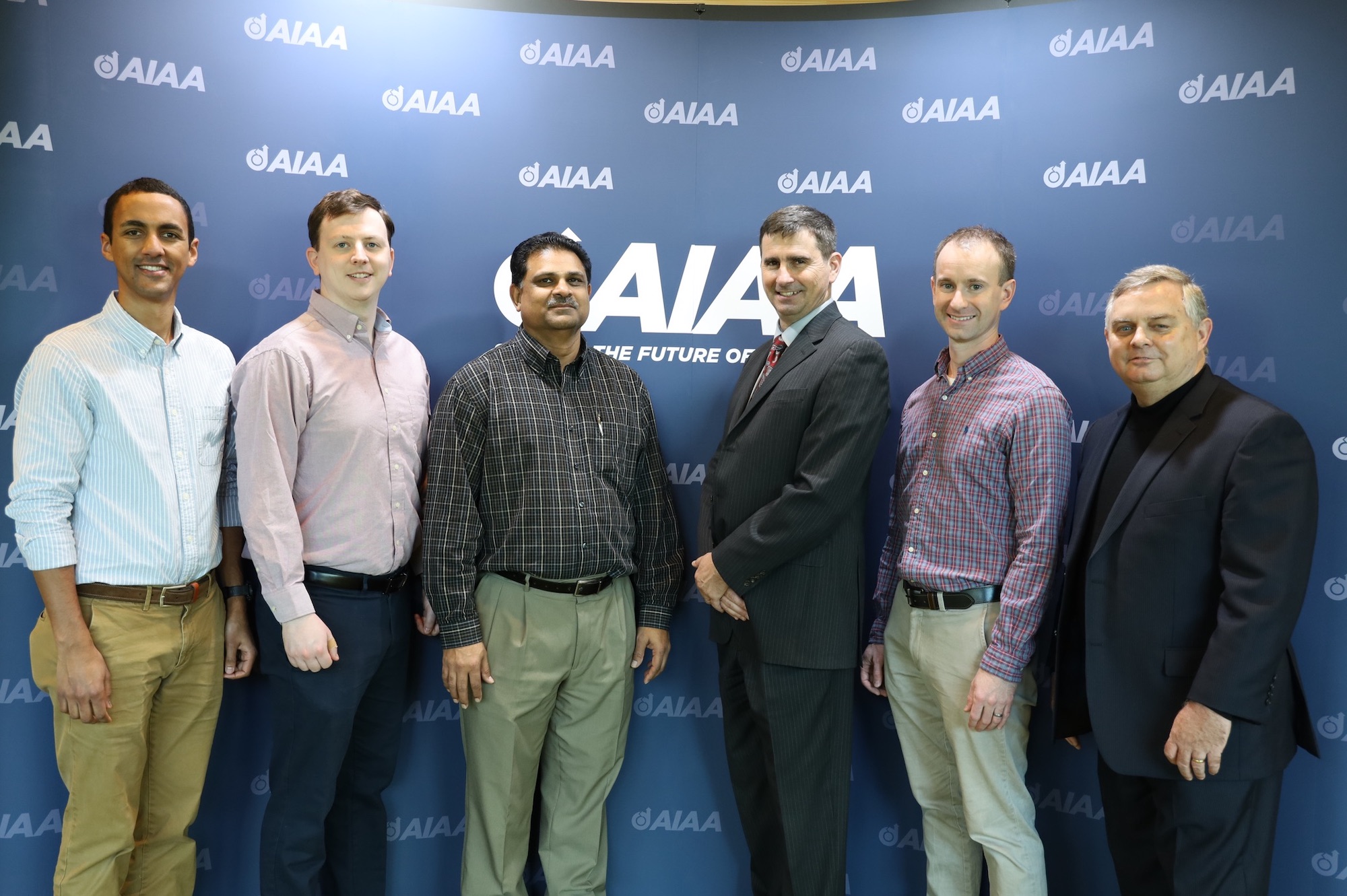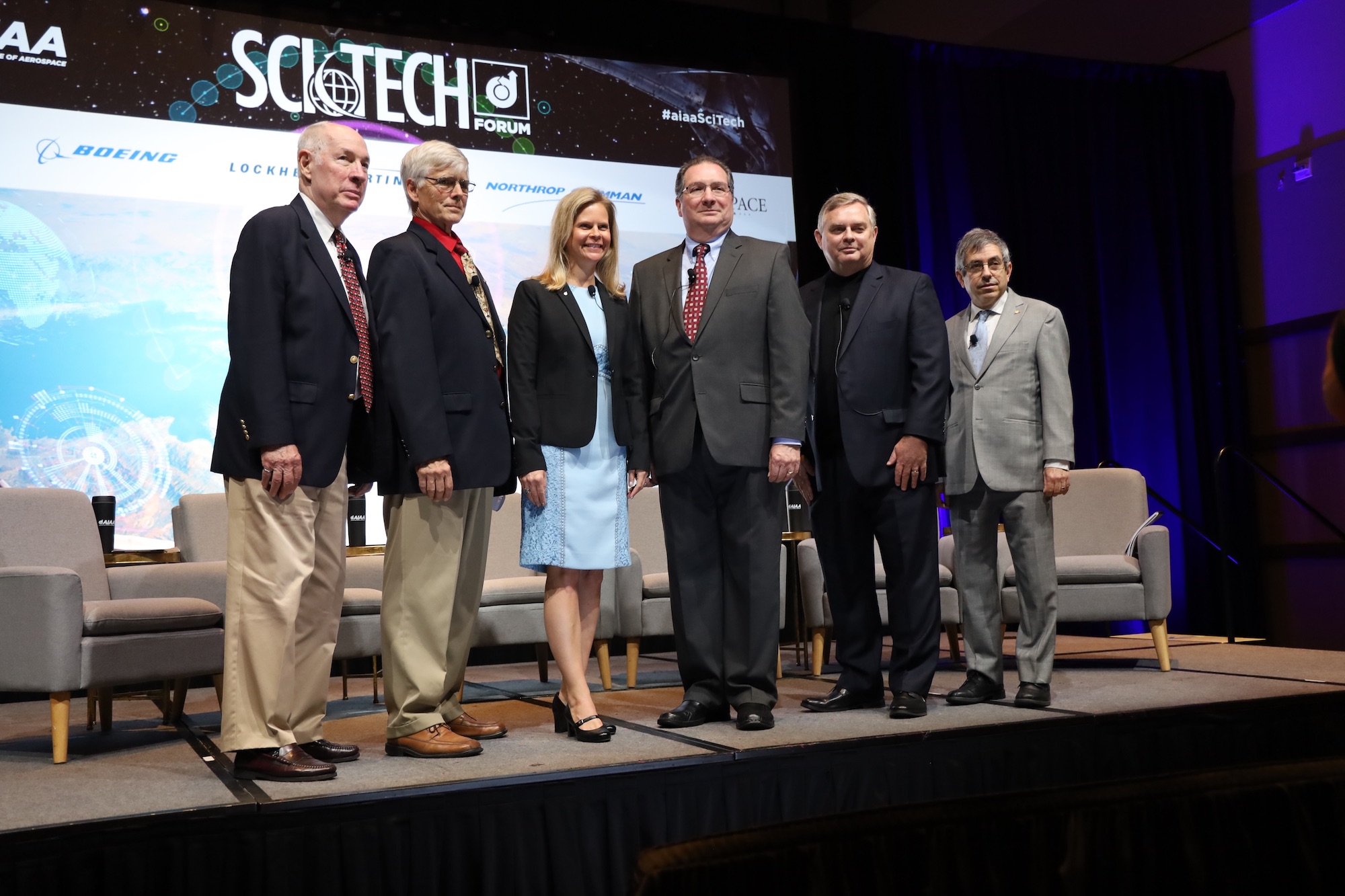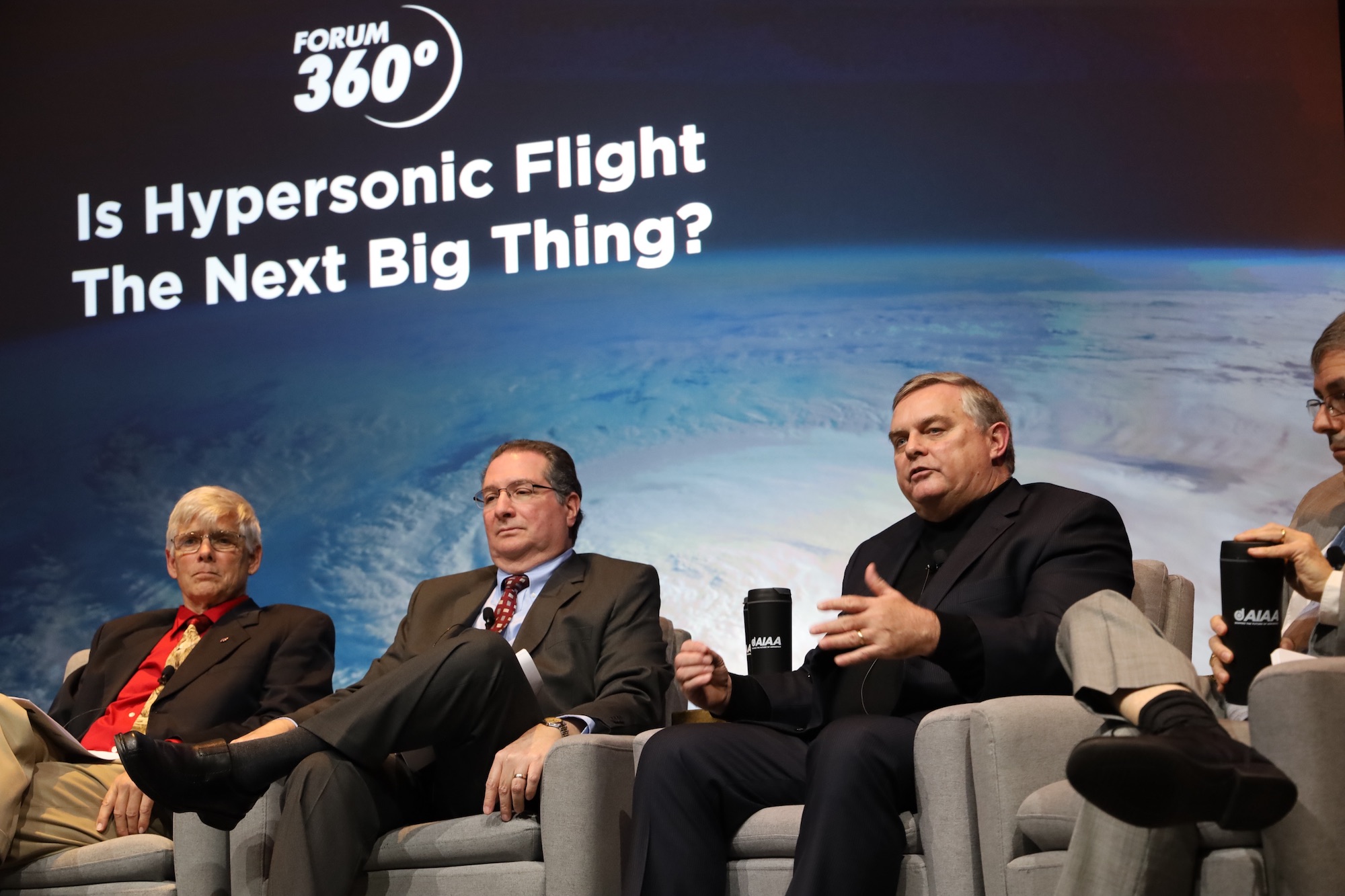Press Release
APL Experts Talk Hypersonics at AIAA SciTech Forum

Credit: Johns Hopkins APL
Is hypersonic flight the next big thing?
“We are much closer to the beginning than the end in terms of realizing [its] full potential,” according to renowned hypersonics expert Dave Van Wie, who offered his forecast during a session at the American Institute of Aeronautics and Astronautics (AIAA) SciTech Forum on Jan. 7 in Orlando, Florida.
Among strong Johns Hopkins Applied Physics Laboratory (APL) representation at the forum, Van Wie, head of APL’s Air and Missile Defense Sector, was part of a panel that explored the state and potential of hypersonics technologies, the accomplishments and lessons learned, new developments, and remaining challenges to achieving reliable and sustained hypersonic flight.
“I have worked in the hypersonics field for my entire 40-year career, and over this period, the interest in and support for the field has vacillated widely,” said Van Wie, who was joined on the panel by Mark Lewis, director, Defense Research and Engineering for Modernization, Office of the Secretary of Defense; Charles McClinton, a former NASA hypersonics technology manager; Richard Mutzman, a former chief engineer for the X51A program, Air Force Research Laboratory; and Frank Boensch, a former National Aerospace Plane deputy director for Airframe, Air Force Flight Dynamics Laboratory.

Credit: Johns Hopkins APL
Van Wie was asked to participate in this panel due in part to APL’s wide engagement in many current hypersonic activities.
“APL has a long history of working challenges associated with hypersonic technology starting with ballistic missiles and modern interceptors,” said Van Wie. “APL efforts start with working to understand the underlying physical technologies, leading to the development of advanced analytical capabilities, through the ground and flight demonstration of new capabilities, to ultimate fielding of entirely new hypersonic systems.”
Moderated by U.S. Air Force Academy aeronautics professor Martiqua Post, the panelists gave 10-minute presentations on various stages of hypersonic development before fielding questions from the audience.
“It was refreshing to see the event so well attended and getting to answer some of the questions surrounding the history of hypersonics and its future with my colleagues,” Van Wie said. “One of the biggest misconceptions is that it’s hard and won’t be done until later. But the truth is that the U.S. has already developed a lot of hypersonic systems that are in use today. We need to take a broader view when considering what hypersonics is. In some sense, the first stage of the SpaceX Falcon 9 rocket that lands on the barge is a reusable hypersonic flight vehicle that is in use today in the commercial market.”
Many other APL staff members participated in the SciTech Forum. The Boundary Layer Transition (BOLT) team presented updates on its program, which is marching toward its hypersonic flight at a test range in Sweden in May. Others participated in committee and board meetings that serve to set the agenda for AIAA activities.
